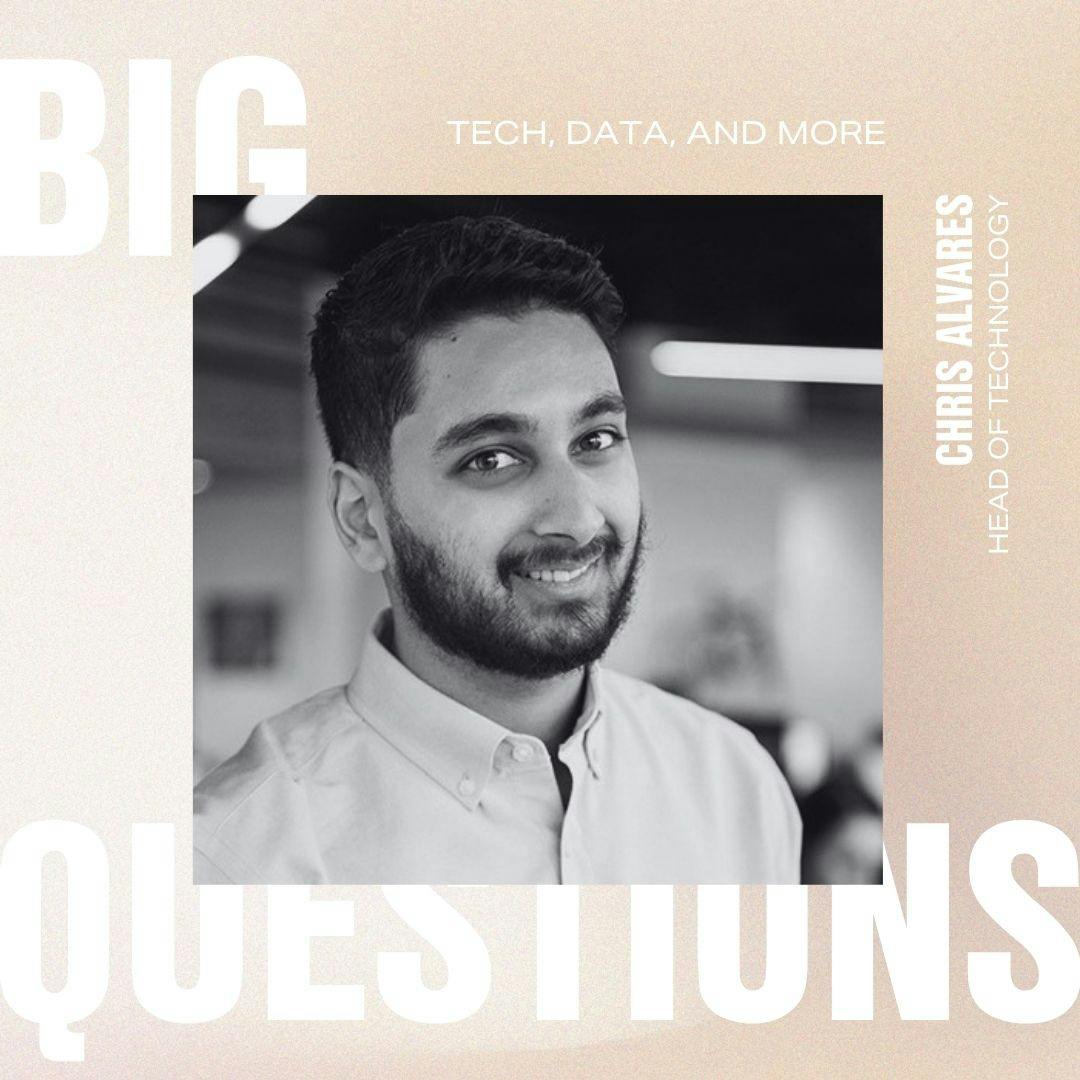Accessibility Tools
PMG Digital Made for Humans
Big Questions: PMG’s Head of EMEA Ed Grice on the Biggest Challenges & Opportunities For Global Brands
5 MINUTE READ | February 27, 2023
Big Questions: PMG’s Head of EMEA Ed Grice on the Biggest Challenges & Opportunities For Global Brands
Abby Long
Abby manages PMG's editorial & thought leadership program. As a writer, editor, and marketing communications strategist with nearly a decade of experience, Abby's work in showcasing PMG’s unique expertise through POVs, research reports, and thought leadership regularly informs business strategy and media investments for some of the most iconic brands in the world. Named among the AAF Dallas 32 Under 32, her expertise in advertising, media strategy, and consumer trends has been featured in Ad Age, Business Insider, and Digiday.
In our latest interview for the Big Questions series, we connected with Ed Grice, PMG’s Head of EMEA, to discuss global media strategy, digital out-of-home activations, and the biggest challenges facing global brands today. With more than a decade of experience leading omnichannel digital activations for some of the world’s most innovative brands, Ed is a veteran digital marketing executive specializing in scaling brand activations in new markets and helping brands reach global audiences at scale.
While there are many challenges facing global brands, the most pressing is the current macroeconomic environment. Market volatility creates currency fluctuations and local economic pressures that influence consumer spending, price sensitivity, and purchase behaviors that brands have to carefully navigate. Consumer privacy also poses an ongoing challenge. Protecting consumer privacy only grows more complex for global brands that must follow consumer privacy laws and regulations across various regions, creating a patchwork of internal data compliance processes and procedures. However, these challenges also present opportunities for brands that are proactively adapting and reshaping their business and media strategies in response to emerging economic pressures and industry trends.
With marketing plans and budgets under greater scrutiny, countless brand marketers will have to do more with less, which has created a bigger appetite for performance marketing to drive growth. Of course, this leads to a knock-on effect as brands have less budget to support activations. As a result, many brands will likely struggle to achieve differentiation, and attract and retain customers in the months ahead, all of which will have an impact on future brand strategy and media investments. In these moments of heightened volatility, we continue to recommend brands protect as much marketing budget as possible.
Our POV on navigating economic uncertainty has more details as to why and how brand marketers can make the case for protecting marketing investments.
I’d like to encourage CMOs and brand marketing executives to take a longer-term view. CMOs are time-poor and under a lot of pressure to deliver growth and performance, with which I sympathize. Yet, because of these increasing pressures, combined with the task of keeping up with advancements and industry innovations, it’s easy for brand marketers to become risk-averse, falling into a more short-term mindset while taking smaller bets and leaving opportunities on the table. This leads to slower planning cycles and an overreliance on every single data point, creating a mindset where new opportunities must be de-risked, with the ability to only move forward on those that can be forecasted to the nth degree.
“I’d like to encourage CMOs and brand marketing executives to take a longer-term view.”
To be clear, I’m not suggesting any brand do away with short-term planning or data-backed decision-making. Instead, I’d like to challenge more executives to balance incremental gains with monumental opportunities. In other words, adopt a learning agenda, and help establish an organizational culture of encouragement and exploration, helping to push marketing teams and media partners to explore new ideas and lead with innovation. There’s incredible value in nurturing new opportunities and adopting a more ambitious approach to digital marketing, helping to deliver business growth and new learnings when innovative opportunities arise.
We're incredibly fortunate that innovation is everywhere in our industry. The technology I’m most excited about is by no means new but has seen a real resurgence and is worthy of more attention. 3D digital out-of-home (DOOH) is extraordinary, and the creative opportunities are truly endless.
“I’d like to challenge more executives to balance incremental gains with monumental opportunities.”
Last year, we demonstrated the capabilities of 3D DOOH activations with The Woolmark Company’s “Wear Wool, Not Fossil Fuel” campaign during the New York and London Fashion Weeks. Our goal was to grab the attention of eco-conscious consumers with show-stopping creative during Fashion Week, showing the environmental impact of synthetic clothing in a way not previously seen before.
At the heart of the campaign were two immersive, 3D billboards in Times Square in New York City, and London’s Piccadilly Circus, which showed a digital Olympics-sized swimming pool being filled with oil.
We’re incredibly proud of this work and were excited to have such a unique opportunity to test the limits of technology with such an immersive creative experience. As an extension of these activations, augmented reality holds so much potential. I’m eager to see how immersive technology pushes the limits of creativity and our industry forward.
It’s difficult to look at the news from 2022 about the retailer Patagonia and not admire how the brand has truly delivered on its purpose as the CEO and his family transferred their shares to a non-profit organization. Instead of creating wealth for its investors, Patagonia has pledged its profits to protect the source of all wealth: The planet. It’s the ultimate manifestation of the brand’s core values, mission, and a remarkable example for all brands that strive to be mission- or values-led organizations.
Stay in touch
Bringing news to you
Subscribe to our newsletter
By clicking and subscribing, you agree to our Terms of Service and Privacy Policy
Slightly closer to home, I’m quite the fan of Paynter, a boutique retailer remaking iconic clothing in limited quantities. New products are released just four times a year, helping to ensure no waste is created. It’s not just the quality of goods or the exclusivity, though both are important, but the brand storytelling that follows every garment from concept to design, production, and delivery. As a customer, you can’t help but grow emotionally invested in your garment, which forms a close-knit community of loyal customers and a closer connection between customer and product.

